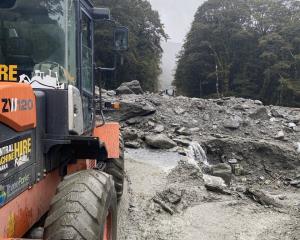
Climate scientists and glaciologists took to the skies this week to find out how New Zealand’s glaciers are faring following this summer’s record-breaking warmth.
The annual long-term aerial Snowline Survey records the snowline altitude of up to 50 glaciers across the South Island.
It is conducted every March at the end of summer, using specialised cameras from a light aircraft.
Thousands of photos are taken from different angles to build 3-D models of glaciers that can be compared year on year, to give an accurate depiction of how much of the previous winter’s snow remains to contribute to long-term glacial ice accumulation.
Niwa climate scientist and project leader Dr Andrew Lorrey said he expected this year’s survey to reveal some "pretty pathetic" glaciers.
"We have seen preliminary photos of some of them and they look sad and dirty.
"At this time of year we can see the effects of the summer melt, but following such an extreme summer the layers really start to peel back and you can see how harsh the effect has been on the glaciers.
"Where it becomes a concern is if there is a succession of seasons like this within a decade or two. That’s when it can cause the overall volume of the glacier to decline."
Glacier fluctuations were among the clearest signals of climate change, because they were highly sensitive indicators of atmospheric temperature and precipitation levels.
Dr Lorrey said the information gathered over the past four decades had produced a unique and incredibly valuable data set that provided an independent measure of how climate change and variability were affecting our water resources.
"We look at the surface of each glacier and the line of demarcation where there is snow from the previous winter above, and exposed bare ice below.
"That line can tell you about the amount of snow gained versus the amount lost since the start of the glacier year in April."
Victoria University glaciologist Prof Andrew Mackintosh said he was expecting one of the largest melt years on record.
"Our team has previously investigated the relationship between the South Island glaciers and sea surface temperatures.
"We have seen that when the Tasman Sea is warmer than normal, you tend to lose a great deal of snow and ice in the Southern Alps.
"The marine heatwave this summer, where temperatures have been up to 6degC higher in some parts of the Tasman Sea, means we are expecting to see a much higher snow line," Prof Mackintosh said.











